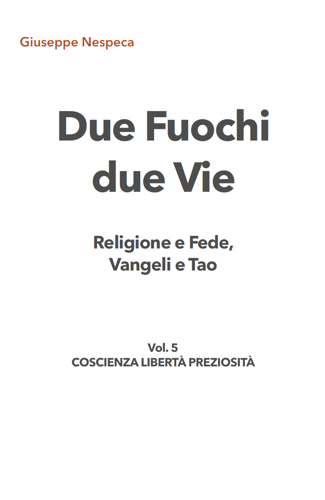1. Jesus Christ, Son of Man and God: this is the culminating theme of our catechesis on the identity of the Messiah. It is the fundamental truth of Christian revelation and faith: the humanity and divinity of Christ on which we shall have to reflect more fully later. For now, we would like to complete our analysis of the messianic titles already present in some way in the Old Testament and see in what sense Jesus attributes them to himself.
As for the title "Son of Man", it is significant that Jesus used it frequently when speaking of himself, while it is the others who call him "Son of God", as we shall see in the next catechesis. Instead, he called himself "Son of Man", whereas no one else called him that, except the deacon Stephen before the stoning (Acts 7:56) and the author of the Apocalypse in two texts (Acts 1:13; 14:14).
2. The title "Son of Man" comes from the Old Testament from the Book of the Prophet Daniel. Here is the text describing a night vision of the prophet: "Looking again in the night visions, behold, there appeared in the clouds of heaven one like a son of man; he came and was presented to him, who gave him power and glory and a kingdom; all peoples, nations and languages served him; his power is an everlasting power, which never fades, and his kingdom is such that it will never be destroyed" (Dan 7:13-14).
And when the prophet asks for an explanation of this vision, he receives the following answer: "The saints of the Most High shall receive the kingdom and possess it for ever and ever . . . then the kingdom and the power and the greatness of all the kingdoms that are under heaven shall be given to the people of the saints of the Most High" (Dan 7:18, 27). The text of Daniel is about an individual person and the people. We note immediately that what refers to the person of the Son of Man is found in the words of the angel in the annunciation to Mary: "he will reign forever . . . and his kingdom will have no end" (Lk 1:33).
3. When Jesus calls himself 'Son of Man' he uses an expression from the canonical tradition of the Old Testament and also found in the Jewish apocrypha. It should be noted, however, that the expression "Son of Man" (ben-adam) had become in the Aramaic of Jesus' time an expression simply indicating "man" ("bar-enas"). Jesus, therefore, by calling himself "son of man", almost succeeded in hiding behind the veil of common meaning the messianic significance the word had in prophetic teaching. It is no coincidence, however, that if utterances about the "Son of Man" appear especially in the context of Christ's earthly life and passion, there is also no lack of them in reference to his eschatological elevation.
4. In the context of the earthly life of Jesus of Nazareth, we find texts such as: "The foxes have their dens and the birds of the air their nests, but the Son of Man has nowhere to lay his head" (Matthew 8: 20); or also: "The Son of Man has come, who eats and drinks, and they say, Behold, a glutton and a drunkard, a friend of publicans and sinners" (Matthew 11: 19). At other times the word of Jesus takes on a value more strongly indicative of his power. Thus when he says: 'The Son of Man is lord even of the Sabbath' (Mk 2:28). On the occasion of the healing of the paralytic lowered through an opening in the roof he states in an almost defiant tone: 'Now, so that you may know that the Son of Man has power on earth to forgive sins, I command you,' he said to the paralytic, 'get up, take up your bed and go home' (Mk 2:10-11). Elsewhere Jesus declares: "For as Jonah was a sign to those in Nineveh, so also will the Son of Man be to this generation" (Lk 11:30). On another occasion it is a vision shrouded in mystery: "A time will come when you will long to see even one of the days of the Son of Man, but you will not see him" (Lk 17:22).
5. Some theologians note an interesting parallelism between the prophecy of Ezekiel and the utterances of Jesus. The prophet writes: "(God) said to me: 'Son of man, I am sending you to the Israelites . . . who have turned against me . . Thou shalt say to them, 'Says the Lord God'" (Ez 2:3-4). "Son of man, you dwell in the midst of a race of rebels, who have eyes to see and do not see, have ears to hear and do not hear . . ." (Ez 12:2) "You, son of man . . . keep your eyes fixed on it (Jerusalem) which will be besieged . . . and you will prophesy against it" (Ez 4:1-7). "Son of man, prophesy a riddle telling a parable to the Israelites" (Ez 17:2).
Echoing the words of the prophet, Jesus teaches: "For the Son of Man came to seek and to save that which was lost" (Lk 19:10). "For the Son of Man did not come to be served, but to serve and to give his life as a ransom for many" (Mk 10:45; cf. also Mt 20:28). The "Son of Man" . . . "when he comes in the glory of the Father", he will be ashamed of those who were ashamed of him and his words before men (cf. Mk 8:38).
6. The identity of the Son of Man appears in the dual aspect of representative of God, herald of the kingdom of God, prophet calling to conversion. On the other hand, he is the "representative" of men, whose earthly condition and sufferings he shares in order to redeem and save them according to the Father's plan. As he himself says in his conversation with Nicodemus: "As Moses lifted up the serpent in the wilderness, so must the Son of man be lifted up that whoever believes in him may have eternal life" (Jn 3:14-15).
It is a clear proclamation of the passion, which Jesus repeats: "And he began to teach them that the Son of Man must suffer greatly, and be reproved by the elders, the chief priests, and the scribes, and then be killed, and after three days rise again" (Mk 8:31). Three times in Mark's Gospel (cf. Mk 9:31; 10:33-34) and in each of them Jesus speaks of himself as the "Son of Man".
7. By the same appellation Jesus defines himself before the tribunal of Caiaphas, when to the question: "Are you the Christ, the blessed Son of God?" he replies: "I am! And you will see the Son of Man seated at the right hand of Power and coming with the clouds of heaven" (Mk 14:62). In these few words echoes Daniel's prophecy about the "Son of man coming on the clouds of heaven" (Dan 7:13) and Psalm 110 that sees the Lord seated at the right hand of God (cf. Ps 110:1).
8. Repeatedly Jesus speaks of the elevation of the "Son of Man", but he does not hide from his listeners that it includes the humiliation of the cross. To the objections and incredulity of the people and disciples, who well understood the magic of his allusions and yet asked him: "How then do you say that the Son of Man must be elevated? Who is this Son of Man?" (Jn 12:34), Jesus asserts: "When you have lifted up the Son of Man, then you will know that I am and do nothing of myself, but as the Father has taught me" (Jn 8:28). Jesus states that his "elevation" by the cross will constitute his glorification. Shortly afterwards he will add: "The hour has come for the Son of Man to be glorified" (John 12: 23). It is significant that at Judas' departure from the Upper Room, Jesus says "now the Son of Man has been glorified, and God also has been glorified in him" (Jn 13:31).
9. This constitutes the content of life, passion, death and glory of which the prophet Daniel had offered a pale sketch. Jesus does not hesitate to also apply to himself the character of an eternal and everlasting kingdom that Daniel had assigned to the work of the Son of Man, when he proclaims to the world: "Then they will see the Son of Man coming in the clouds with great power and glory" (Mk 13:26; cf. Mt 24:30). It is in this eschatological perspective that the Church's work of evangelisation must take place. He warns: "You will not have finished going through the city of Israel before the Son of Man comes" (Mt 10:23). And he asks: "But will the Son of Man, when he comes, find faith on earth?" (Lk 18:8).
10. If, as the "Son of Man", Jesus realised by his life, passion, death and resurrection, the messianic plan outlined in the Old Testament, at the same time he assumes by that same name his place among men as a true man, as the son of a woman, Mary of Nazareth. Through this woman, his Mother, he, the 'Son of God', is at the same time the 'Son of man', a true man, as the Letter to the Hebrews attests: 'He became truly one of us, in all things like us except sin' (Heb 4:5; cf. Gaudium et Spes, 22).
[Pope John Paul II, General Audience 29 April 1987]












